Which card creates the 60 FPS limit when?
If you are looking for the ideal map to get an average frame rate of 60 fps according to this or that setting, the following table should make you happy: We have the average frame rates of the different cards in 4K, QHD and FHD synthesized according to the selected DXR setting. In green, the average frame rate per second exceeds 60 fps, in orange it is between 50 and 60 fps and in red it is less than 50 fps.
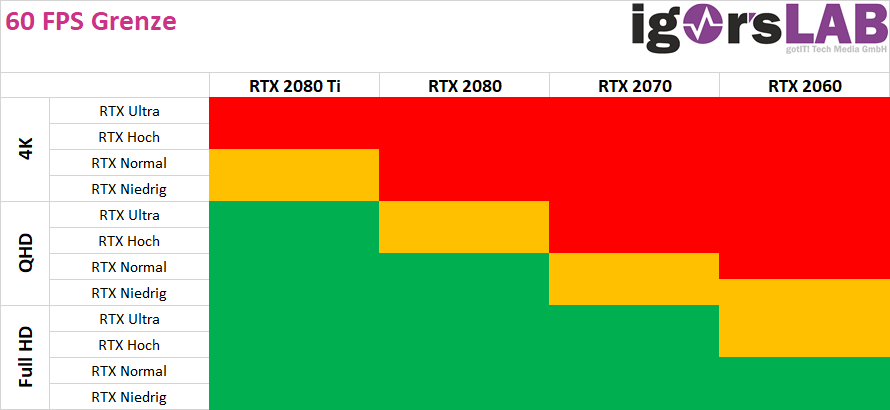
In summary, you want to play in Ultra HD with Ray-Tracing, for which (currently) there is no way past the GeForce RTX 2080 Ti. For QHD, the GeForce RTX 2080 is already sufficient and in "Low" or "Low" "Normal" also a GeForce RTX 2070 still copes well with the game and good optical quality. If you want to bake smaller buns (or need to), even a GeForce RTX 2060 in "Low" is enough if you can cope with an average frame rate of 50 fps. However, in order to get beyond 60 fps with the two smaller cards, you have to go down to Full HD.
Utilization of CPU, work memory, and graphics memory
Now let's see how Battlefield V manages the CPU and RAM resources available to it. The minimum configuration to benefit from DXR requires a Core i5 8400, so our i9 9900K should be more than enough. We also enabled HyperThreading and tested it in DirectX 12, all in QHD with the same settings as before. We have deliberately limited the frame rate at 60 fps to measure exactly and only the difference caused by DXR.
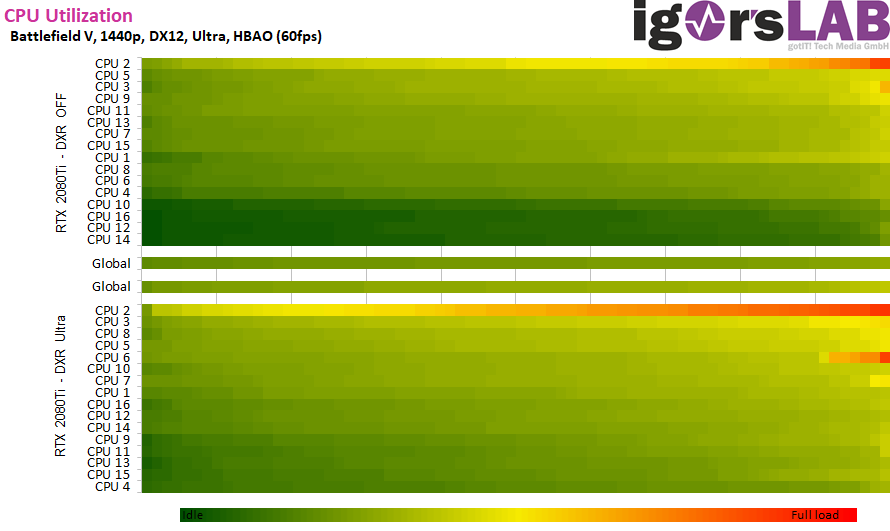
The following gallery shows us DXR Off and DXR Ultra again in detail for the utilization of the individual cores via the timeline, as well as the corresponding clock frequency:
If you activate DXR , the allocation of the used memory increases by a whopping 1.3 GB, which is not surprising:

Coincidence or not – the load on the graphics memory also increases again by approx. 1.3GB:
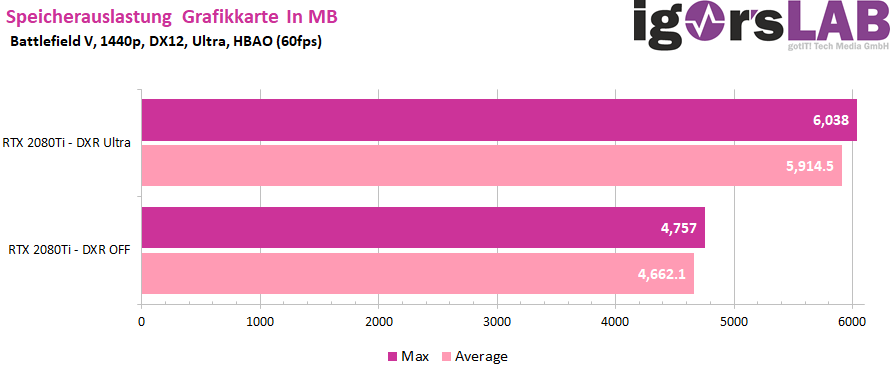
Summary
While the 3D engine of Battlefield V is not completely free of errors, be it visually (bugs that affect textures or flashing objects, etc.) or physically (the ragdoll physics is sometimes quite surreal), the hybrid rasterization/ray tracing in real time is quite impressive. Visually, this is all a real eye-catcher, but financially also unfortunately connected with Nvidia's tourist tax, in order to be able to take a seat at the rather exclusive RTX pool.
Summarized in QHD, the low RTX setting gives the following picture of all maps in direct comparison:
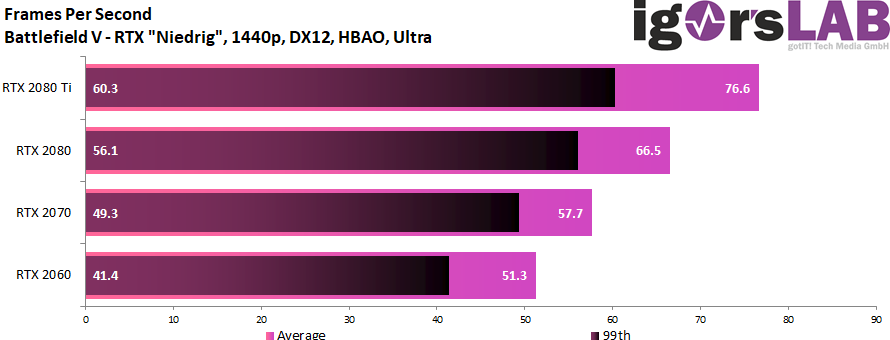
The same thing on "Ultra":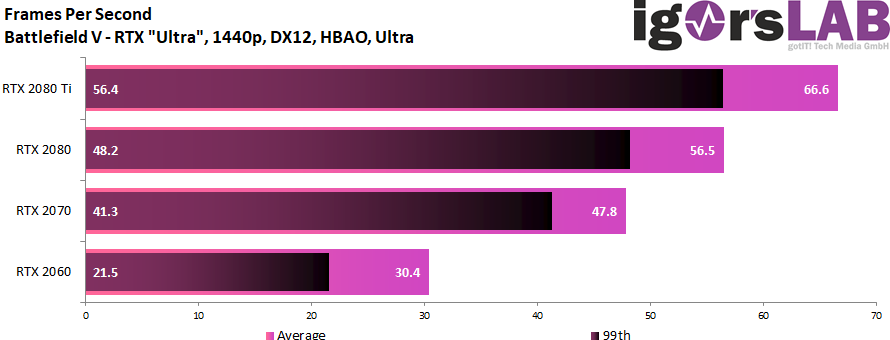
It should also be noted that in Full HD the ray tracing in this game sometimes seems to suffer from a certain tendency to flicker, perhaps also due to the "small" number of rays in some scenes. In QHD, this phenomenon is fortunately less noticeable, but even there you can find places every now and then if you are looking for it exactly. Despite all the limitations that still exist, this technique makes you want more. When you stand on it.
Battlefield V (PC)
 | lagernd | 13,00 €*Stand: 03.05.24 20:40 |
 | Lieferzeit 5-6 Werktage | 13,94 €*Stand: 02.05.24 20:40 |
 | Lieferzeit 4-5 Werktage | 13,95 €*Stand: 03.05.24 11:19 |




































Kommentieren